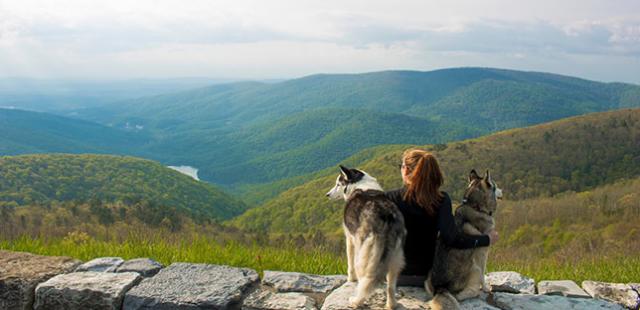Many states in America boast historic connections, but none have a more deeply rooted claim to the origins of our country than Virginia. As the home of the very first American colonists, Virginia has historic destinations that date back more than 400 years. Add in strong ties to the first governing body in the U.S., the American Revolution, and the Civil War, and you’ll soon discover Virginia is unrivaled in its historic locations. If you’d rather experience history than read about it, these 13 sites in Virginia need to be on your travel bucket list.
Historic Jamestowne
 Photo credit: Bill Crabtree Jr.
Photo credit: Bill Crabtree Jr.
Discover the site of the first permanent English colony in America at Historic Jamestowne, only a few miles away from Yorktown and another part of the Historic Triangle. This is the site where Captain John Smith and the rest of the 1607 colonists settled, ultimately meeting Pocahontas and the indigenous tribes in the Chesapeake Bay region. Here, you’ll visit the site where Pocahontas married John Rolfe in 1614, signaling a peace between the colonists and Powhatan people that was unfortunately short-lived.
Archaeological excavations are still underway today at Jamestowne, and periodic tours offered throughout the day take you past the dig sites as the guides explain findings and their historical significance. Be sure to visit the Jamestown Settlement to see a full scale model of the original Jamestown fort and Powhatan community, as well as exploring replicas of the three ships that sailed from Europe with the first Colonists. Learn about more than 400 years of American history when you travel to Jamestowne.
Jackson Ward

Richmond's Jackson Ward neighborhood is rich in history, with notable historic locations including the Maggie L. Walker National Historic Site and the Black History Museum & Cultural Center of Virginia. The neighborhood was heralded as the "Black Wall Street of America", with a staggering amount of wealth held amongst the residents during a time when traditional banks did not allow accounts for Black citizens. But Maggie Walker's St. Luke Penny Savings Bank gave Black Richmonders financial freedom and control, and the neighborhood benefited greatly from her leadership, intelligence, and pioneering spirit.
Jackson Ward was also known as the "Harlem of the South", as venues along 2nd Street (referred to as "the Deuce" at the time) like the Hippodrome Theater welcomed Black performers that were not permitted to stay in other neighborhoods of the city after performing. Big names in the music industry like Duke Ellington, Ella Fitzgerald, Nat King Cole, Billie Holiday, Bill "Bojangles" Robinson, and James Brown performed at the Hippodrome, giving local Black residents the chance to see their favorite entertainers live.

Photo Credit: Hannah Armstrong, @hannahelizarmstrong
In addition to history, you'll find some of Richmond's best culinary treasures in the Ward, from Soul Taco to Mama J's Kitchen. Stick around after the historic tours and have lunch at one of these spots to discover the culinary history of Richmond's Jackson Ward.
Colonial Williamsburg
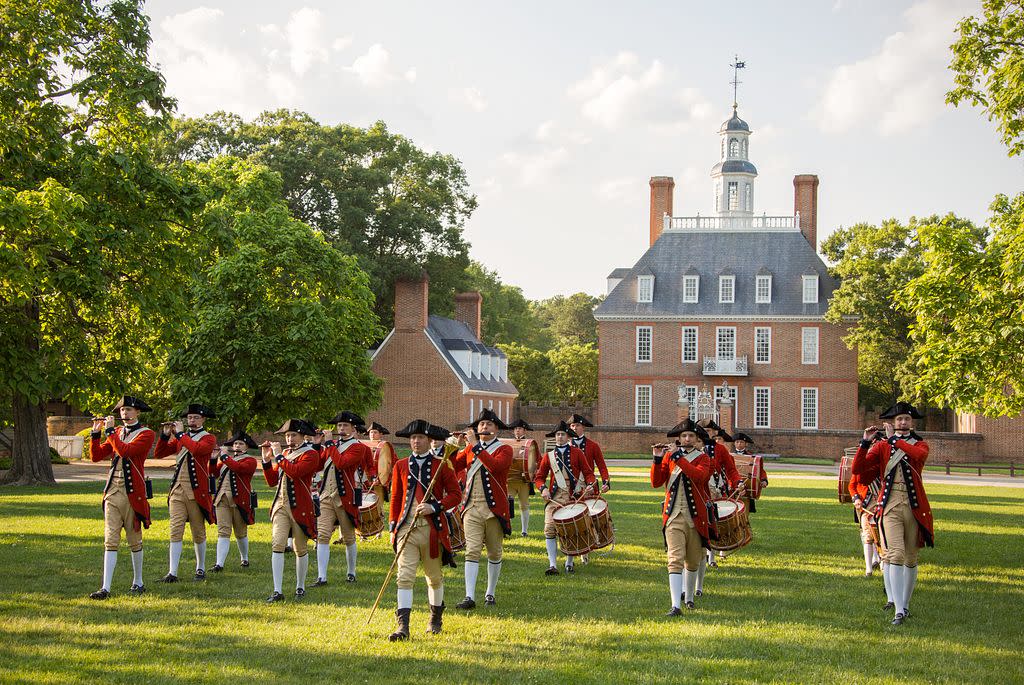
Although the Virginia Capitol takes the title for the longest standing working American Capitol, the Capitol of the first permanent colony in the New World is Colonial Williamsburg. The Historic Triangle site has many notable historic distinctions, including the 1619 meeting location of the oldest representative assembly, the House of Burgesses. The group introduced a resolution to gain independence from Great Britain at Williamsburg, marking the beginning of the Revolutionary War. The historic park is filled with period actors that portray what life was like for the average townspeople, shopkeepers, tradespeople, and political figures of the Colonial era. Colonial Williamsburg’s lands are expansive, with a formal garden, natural park, and restored historic buildings open for tours. Walk down Duke of Gloucester Street (informally referred to as “DoG Street”) and find restaurants, shops, and upscale accommodations all easily accessible within the grounds of this historic destination.
First Landing State Park

Commemorating the site where English Colonists first landed in 1607, First Landing State Park is located on the northern end of Virginia Beach. While it is the most-visited state park in Virginia, it is large enough to almost feel empty at times, with nearly 20 miles of trails winding throughout the park and over 1.5 miles of sandy Chesapeake Bay beach shoreline.
More than 100 years later, the site was home to fearsome pirates, who used the calm waters of the Chesapeake Bay to scan the horizon for ships that they could plunder. The most infamous pirate of all time, Blackbeard, is said to have buried a load of treasure somewhere along the coastal grounds before fleeing the British Navy forces for North Carolina waters. Unfortunately for Blackbeard, he was captured and killed by the British forces, and his storied treasure lost to this day.
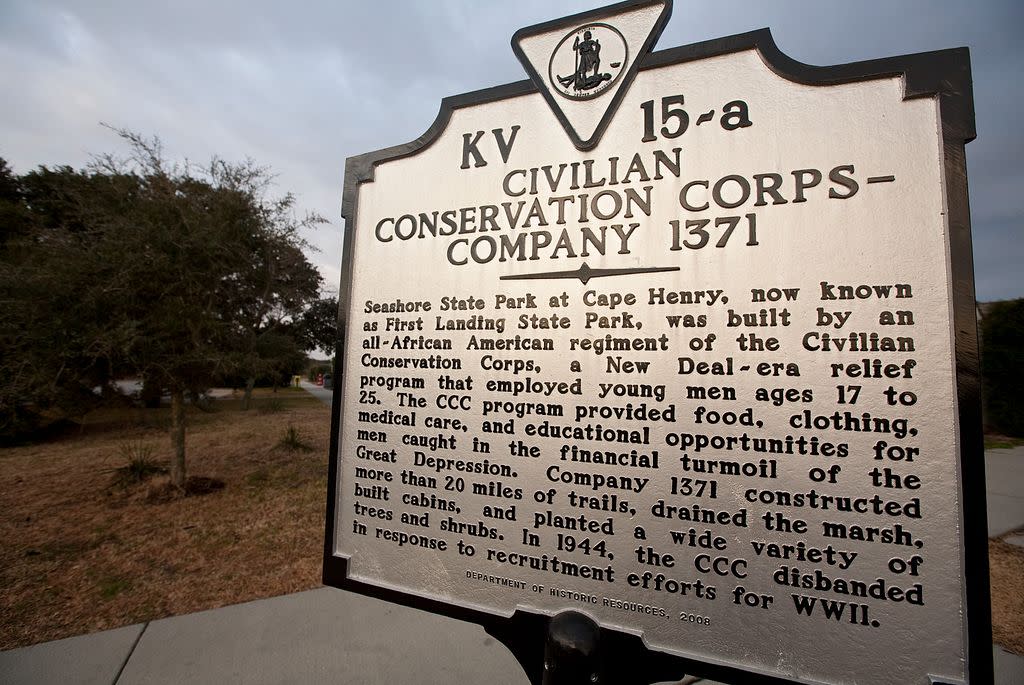
Photo Credit: Bill Crabtree Jr.
The park holds historical significance for another reason, as well; an all-Black Civilian Conservation Corps Company built the park's trails and cabins during the 1930s. But while these workers put their energy and efforts into building the park, they were not allowed to visit due to Segregation laws. In 1951, a group of Black Virginians filed suit against the Virginia Conservation Commission due to being denied entry into the park. Rather than integrating, state officials closed the park in 1955. However, the park was reopened to the public in 1965, regardless of skin color.
Monticello

Photo Credit: The Detour Duo, @thedetour_duo
Thomas Jefferson’s life was full of achievements, including authorship of the Declaration of Independence, becoming the third President of the United States, and later in life founding the prestigious University of Virginia. But his personal achievement of building Monticello, his home outside of Charlottesville, was a project very close to his heart. Jefferson began building his estate at only 26 years old after inheriting the Piedmont land from his father and spent the last 17 years of his life residing at beautiful Monticello. Visitors can wander the stunning grounds, tour the home, and even pay respects to the founding father at Jefferson’s final resting place. Upgrade your home tour ticket to gain access to the top floors of the residence, where you can get a peek inside the iconic dome room.
Mount Vernon

Photo Credit: Aniesia Williams, @iamaniesia
Another noteworthy residence of a previous president, Mount Vernon sits along the Potomac River south of Arlington. George Washington’s family owned the land since 1674, but it was his father that chose the spot for a modest family home that he constructed between 1726 and 1735. After the passing of his father, the first President of the United States inherited the 500 acre estate, and instead of tearing down the previous dwelling, he decided to add to the residence, building a large mansion in his own style. Washington spent 20 years creating his vision of Mount Vernon and lived here with Martha until his death in 1799. Both George and Martha Washington were buried on the property in the family tomb, and today, visitors can still see the private cemetery while touring the gorgeous grounds.
Yorktown
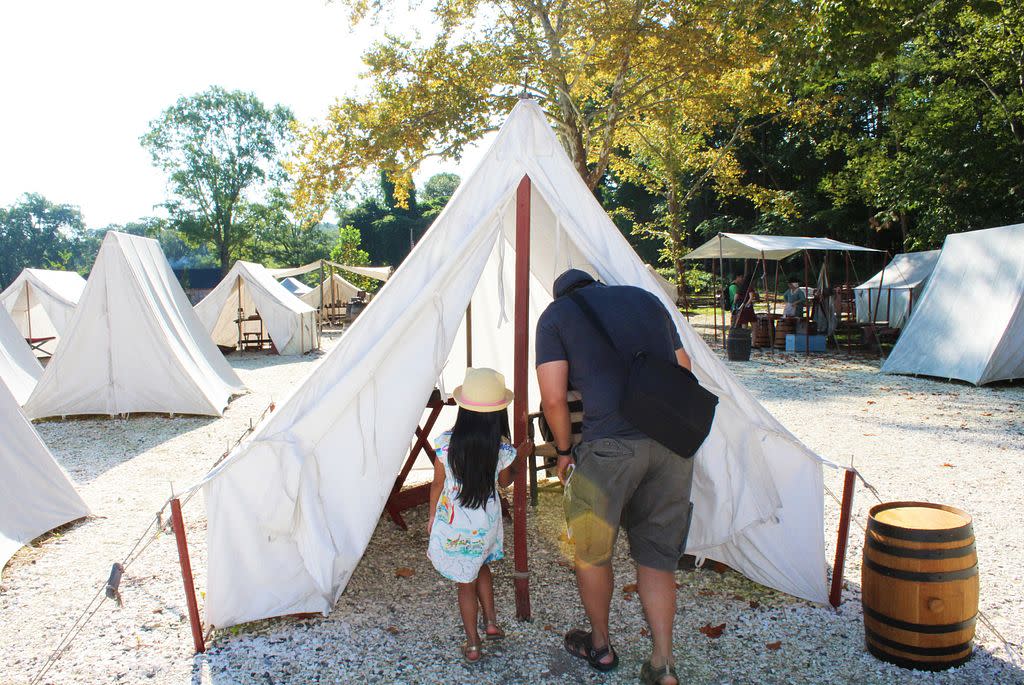 Photo Credit: Skylar Arias Adventures, @skylar_arias_adventures
Photo Credit: Skylar Arias Adventures, @skylar_arias_adventures
Yorktown was a pivotal site for both the American Revolution and the Civil War, and as part of the Historic Triangle, you can experience decades of history without traveling more than a few miles in any direction. Plan a trip to the newly renovated American Revolution Museum at Yorktown, where interactive exhibits take you on a journey through Colonial Virginia and the onset of the war. Don’t miss the experiential theater, where a film transports visitors to the battleground, complete with smoke, wind, and even the smell of coffee! Head outside afterwards to talk with civilian, medical, and soldier reenactors to learn about daily life, the challenges of medicine for the doctors of the time, and how to load and fire a musket.
Just down the road from the museum is Yorktown Battlefield, the site of the last major battle of the American Revolution. The tour begins with a short movie that explains the significance of the site and a walk through the museum’s exhibits. Head out to the grounds after the museum for a look at the restored battlefield, siege lines, and Moore House, where Cornwallis sent his men to arrange for surrender terms with the American forces fighting under George Washington.
More of a Civil War history buff? This historic location is also the site of the Siege of Yorktown, a Civil War battle that took place in 1862 during the Peninsular Campaign.
Montpelier
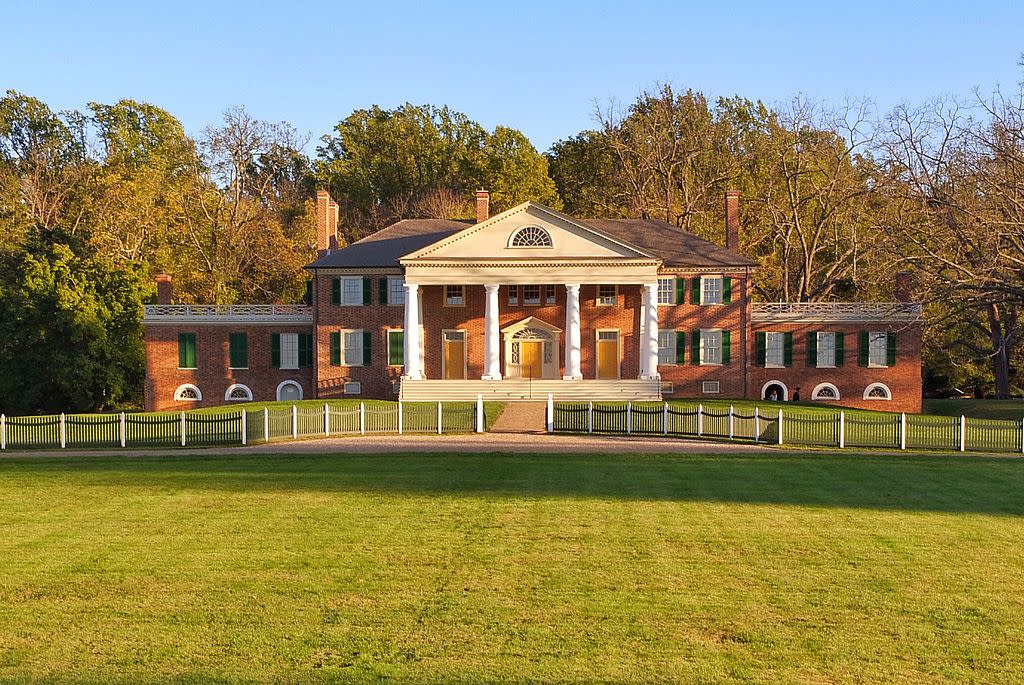 Photo Credit: Big Orange Frame
Photo Credit: Big Orange Frame
Montpelier was home to James Madison, who had the distinction of not only being the Fourth President of the United States, but also the Father of the Constitution and Architect of the Bill of Rights. Plan a trip to his idyllic estate, located about 25 miles north of Charlottesville. House tours are available to the public for a small fee, but visitors are welcome to walk the extensive grounds free of charge. The property contains formal gardens, archaeological dig sites, and over 8 miles of walking trails through the meadows and forests, and leashed pets are welcome on the grounds.
Stratford Hall

Photo credit: Bill Crabtree Jr.
On a high bluff overlooking the Potomac River, Stratford Hall contains some of the most architecturally significant rooms of the Colonial era. The estate is the birthplace of Confederate General Robert E. Lee and was built in the late 1730’s. Guides offer tours of the Great House, or you can take a self-guided tour to view the home at your own pace. Purchase a grounds pass to explore the property’s six nature trails that wind through the woodlands and meadows surrounding the home. Leashed pets may accompany responsible owners throughout most of the grounds.
The Virginia State Capitol

Photo credit: Bill Crabtree Jr.
Another prominent architectural design by Thomas Jefferson, the Virginia State Capitol building was begun in 1785 and first occupied by Virginia’s General Assembly, America’s oldest English-speaking legislature, in 1788. The Capitol building was the first American State Capitol that was built after the Revolutionary War, and during the Civil War, the Confederate Congress used the Capitol building as their headquarters. Between 1904 and 1906, the East and West Wings were added, where lawmakers still meet to craft Virginia legislation. Guests are welcome to take self-guided tours of the Capitol seven days a week, and guided tours are available by appointment (required for groups of ten or more). The Capitol building is fully handicapped accessible.
The Crooked Road
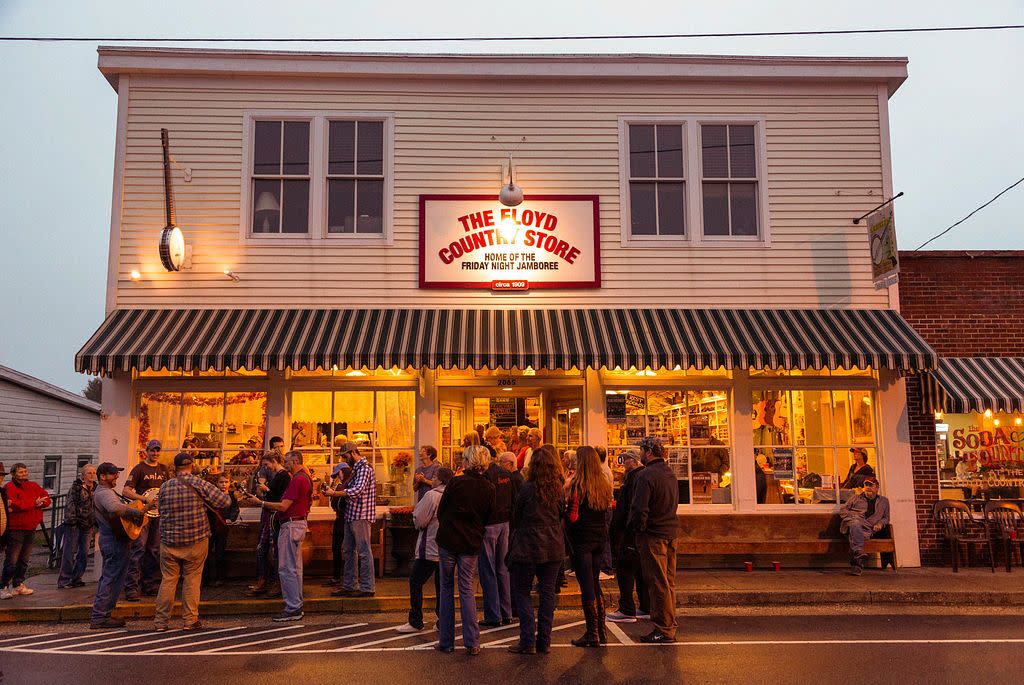
Photo Credit: Brian Camp, @brian_k_camp
The Crooked Road is more than just one historic destination, but rather a string of musical history sites along a trail that winds through 300 miles of scenic landscape in Southwest Virginia. Drive through 19 counties, 4 cities, and 54 towns as you learn about the music of the region and how the influence of the artists that came from the Crooked Road is still felt today. A few can’t-miss stops include the Birthplace of Country Music Museum in Bristol, the Floyd Country Store, and the Carter Family Fold in Hiltons. Make sure to check the schedules for the individual Crooked Road destinations ahead of time, as live music performances are often on the agenda for these music heritage sites.
James Monroe's Highland

Photo Credit: Jon Gregory, @jonwgregory
James Monroe was an important figure in American history with a long list of achievements, including crossing the Delaware River as a soldier during George Washington’s 1776 campaign against the British, negotiating the Louisiana Purchase, and becoming the American president from 1816-1820, during which he also negotiated the Missouri Compromise. Monroe was lifelong friends with Thomas Jefferson, whom he met in Richmond while studying law, and he decided to settle down near Jefferson outside of Charlottesville on his estate, Highland, which he purchased in 1793. He sold the property in 1825, but the estate was eventually purchased and renovated by his alma mater, William & Mary, allowing for visitors to tour the former president’s home.
Appomattox

Appomattox is another destination with multiple ties to history. Start your visit at the Museum of the Confederacy, where you can learn about Virginia during the Civil War and the lives of the Confederate soldiers from exhibits and carefully preserved artifacts. Then, head to the Appomattox Court House and National Historical Park to see where the Civil War finally ended. Guests are welcome to take a walking tour of the park (leashed pets allowed) and a look at the village properties that have been restored to their original condition. Make sure you stop by McLean House while in the park, the site that marks where Generals Lee and Grant signed terms of the surrender, concluding the most brutal and bloody chapter in American history.
Looking to learn more about Virginia’s rich history? Find many more historic sites to visit this year, from battlefields and memorials to restored homes of famous figures, to experience why Virginia is for History Lovers.

